Why Stroke Awareness Matters: A Lifesaving Guide
Learn why stroke awareness is crucial. Recognise signs, understand risks, and act fast to save lives with this comprehensive guide.
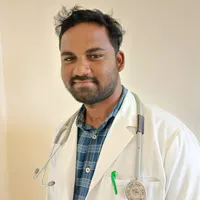

Introduction
Imagine a single moment that changes everything. A clot or bleed in the brain can strike suddenly, robbing a person of their ability to move, speak, or think independently. A stroke is a medical catastrophe, but it doesn't have to be a life sentence. The difference between a full recovery and permanent disability often boils down to one critical factor: awareness. Understanding the importance of stroke awareness is not just about memorising facts; it's about equipping yourself with the knowledge to save a life—possibly your own or that of a loved one. This guide delves deep into why recognising the signs, knowing the risks, and acting with lightning speed is the most powerful weapon we have against one of the world's leading causes of death and disability. We will explore the science behind strokes, decode the lifesaving FAST acronym, and empower you to become a crucial first responder in a brain emergency.
What is a Stroke? The Brain Under Attack
A stroke, often called a "brain attack," occurs when the blood supply to a part of the brain is interrupted or severely reduced. This deprives brain tissue of essential oxygen and nutrients, causing brain cells to begin dying within minutes. This sudden disruption in brain function is what leads to the visible symptoms of a stroke. There are three main types of attacks on the brain.
Ischaemic Stroke: The Clogged Pipe
Accounting for about 87% of all strokes (according to the American Stroke Association), an ischaemic stroke is the most common type. It happens when a blood clot blocks or plugs an artery leading to the brain. The clot can form directly in the brain's blood vessels (thrombotic stroke) or travel from elsewhere in the body, such as the heart, and lodge in a narrower brain artery (embolic stroke). Think of it like a clogged pipe cutting off water to a part of your home.
Haemorrhagic Stroke: The Burst Pipe
A haemorrhagic stroke is less common but often more deadly. It occurs when a weakened blood vessel in the brain ruptures and bleeds into the surrounding tissue. The leaking blood accumulates and compresses the delicate brain structures. This type is frequently linked to uncontrolled high blood pressure (hypertension) and aneurysms (weak spots in blood vessel walls).
Transient Ischaemic Attack (TIA): The Warning Shot
A Transient ischaemic attack (TIA), or "mini-stroke," is caused by a temporary clot. The symptoms are identical to a full stroke but are short-lived, typically lasting less than an hour. However, a TIA is a major red flag; it is a powerful warning that a full-blown stroke may be imminent. Ignoring a TIA is a dangerous mistake. It is a critical opportunity to seek medical help and implement preventive strategies.
Consult a Neurologist for the best advice
The Golden Hour: Why Every Second Counts
In stroke care, time is the brain. For every minute a stroke goes untreated, a patient loses approximately 1.9 million neurons. This rapid degeneration is why the concept of the "Golden Hour"—the first 60 minutes after symptom onset—is so vital. Rapid response within this window dramatically increases the chances of receiving clot-busting drugs (thrombolytics like tPA) or undergoing a mechanical thrombectomy (a procedure to physically remove the clot), which can significantly minimise brain damage and improve outcomes.
How Delayed Treatment Causes Irreversible Damage
Brain cells are incredibly vulnerable. Without a constant supply of oxygenated blood, they begin to die swiftly and cannot regenerate. The longer the blockage or bleed continues, the larger the area of infarct (dead tissue) becomes. This translates directly to the severity of long-term disabilities, such as paralysis, speech impairments, and memory loss. Early treatment can literally mean the difference between walking out of the hospital and requiring lifelong care.
Know the Signs: The FAST Acronym and Beyond
Recognising the symptoms is the first and most crucial step in the chain of survival. The FAST acronym is a simple, effective tool developed by healthcare experts to help anyone identify a potential stroke.
F.A.S.T. - The Essential First Check
To quickly identify a potential stroke and act swiftly, check for the following warning signs:
F - Face Drooping: Ask the person to smile. Does one side of the face droop or feel numb?
A - Arm Weakness: Ask the person to raise both arms. Does one arm drift downward?
S - Speech Difficulty: Ask the person to repeat a simple phrase. Is their speech slurred or strange?
T - Time to Call Emergency Services: If you observe any of these signs, call for an ambulance immediately. Note the time when the symptoms first appeared.
Additional Stroke Symptoms You Shouldn't Ignore
While FAST covers the major signs, a stroke can present in other ways. Be aware of:
- Sudden numbness or weakness in the leg.
- Sudden confusion, trouble understanding speech.
- Sudden trouble seeing in one or both eyes.
- Sudden trouble walking, dizziness, loss of balance or coordination.
- Sudden severe headache with no known cause.
Are You at Risk? Understanding Stroke Risk Factors
While some risk factors are beyond our control, many are manageable through lifestyle changes and medical care. Understanding your personal risk profile is a fundamental part of stroke prevention.
Non-Modifiable Risks: Age, Gender, and Family History
These are factors you cannot change but should make you more vigilant:
- Age: Risk increases with age, doubling each decade after 55.
- Gender: Women have a higher lifetime risk of stroke and are more likely to die from one. Factors like pregnancy, preeclampsia, and hormone therapy play a role.
- Race/Ethnicity: African Americans, Hispanic Americans, and Asian/Pacific Islanders have a higher risk.
- Family History: Your risk is higher if a parent, grandparent, or sibling has had a stroke.
Modifiable Risks: The Power of Lifestyle Changes
This is where awareness translates into action. Key modifiable risks include:
- High Blood Pressure (Hypertension): The leading cause of stroke.
- Smoking: Chemicals in smoke damage blood vessels and accelerate clot formation.
- Diabetes: High blood sugar damages blood vessels over time.
- High Cholesterol: Contributes to plaque buildup that can block arteries.
- Physical Inactivity and Obesity.
- Unhealthy Diet high in saturated fats, trans fats, and sodium.
- Atrial Fibrillation (AFib): An irregular heartbeat that can cause clots to form in the heart.
If you have conditions like hypertension or AFib, consistent management is key. If your condition is difficult to control, consult a doctor online with Apollo24|7 for a personalised management plan and regular follow-ups.
Beyond FAST: The Role of Advanced Stroke Care
Once emergency services are called, a sophisticated system swings into action. Paramedics pre-notify a stroke-ready hospital, where a specialised team is waiting. Rapid neuroimaging (like a CT scan) determines the stroke type. For ischaemic strokes, tPA can be administered to dissolve the clot, or a neurointerventional radiologist can perform a thrombectomy. For haemorrhagic strokes, surgery may be needed to repair the damaged vessel. This entire streamlined process hinges on that first call.
Life After Stroke: The Road to Recovery and Rehabilitation
Recovery is a marathon, not a sprint. Post-stroke rehabilitation is a critical phase that involves a team of specialists—physiotherapists, occupational therapists, and speech-language pathologists—who work to help survivors regain lost skills and relearn how to perform daily activities. The extent of recovery varies, but early and intensive rehab significantly improves functional outcomes and quality of life.
Empowerment Through Awareness: How You Can Make a Difference
You don't need a medical degree to save someone from a stroke. Your empowered awareness makes you a vital link in the chain of survival.
- Educate Yourself and Others: Share the FAST acronym with your family, friends, and colleagues.
- Know Your Numbers: Get regular check-ups to monitor your blood pressure, cholesterol, and blood sugar. Apollo24|7 offers a convenient home collection for tests like HbA1c for diabetes and lipid profiles for cholesterol, making it easier to stay on top of your health.
- Adopt a Brain-Healthy Lifestyle: Eat a balanced diet (like the DASH or Mediterranean diet), exercise regularly, maintain a healthy weight, avoid smoking, and drink alcohol in moderation.
- Act Without Hesitation: If you see the signs, call emergency services immediately. Do not wait to see if the symptoms go away.
Conclusion: Your Knowledge is Power
The importance of stroke awareness cannot be overstated. It transforms bystanders into lifesavers and empowers individuals to take control of their health destiny. By recognising the sudden signs, understanding the urgent need for treatment, and mitigating personal risks through proactive healthcare, we can collectively turn the tide against stroke. This knowledge is a social responsibility—a shared tool that protects our communities. Remember, the next first responder in a stroke emergency could be you. Stay aware, stay prepared, and never hesitate to act.
Consult a Neurologist for the best advice
Consult a Neurologist for the best advice

Dr. Rajendra Prasad
Spine Surgeon
36 Years • MBBS. FRCS (Glas) U.K FRCS (Neurosurgery) Intercollegiate Specialty Board in Neurosurgery (U.K). Fellowship in Spine Surgery, Stanmore, London U.K. Specialist Registration in Neurosurgery with General Medical Council. U.K
Delhi
Apollo Hospitals Indraprastha, Delhi

Dr. Abhisek Nanda
Neurologist
10 Years • DM (NEUROLOGY) ,DNB(MEDICINE)
Rourkela
Apollo Hospitals, Rourkela, Rourkela
(150+ Patients)

Dr. Gangula Charvitha Reddy
Neurologist
6 Years • MBBS, MD DM NEUROLOGY, SCE NEUROLOGY ( RCP-UK).
Hyderabad
Apollo Hospitals D R D O kanchanbagh, Hyderabad
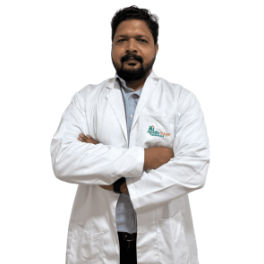
Dr Justin Thomas
Neurologist
10 Years • MD DM NEUROLOGY
Bhopal
Apollo Sage Hospitals, Bhopal
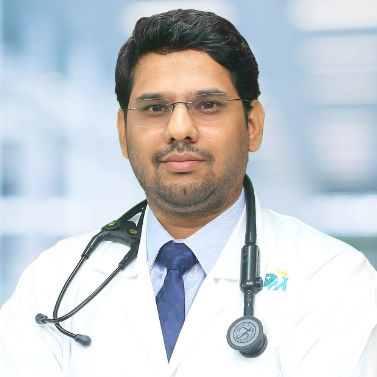
Dr. Andugulapati Santosh Sriram
Neurologist
6 Years • MBBS, MD, DM (NEUROLOGY)
Hyderguda
Apollo Hospitals Hyderguda, Hyderguda
Consult a Neurologist for the best advice

Dr. Rajendra Prasad
Spine Surgeon
36 Years • MBBS. FRCS (Glas) U.K FRCS (Neurosurgery) Intercollegiate Specialty Board in Neurosurgery (U.K). Fellowship in Spine Surgery, Stanmore, London U.K. Specialist Registration in Neurosurgery with General Medical Council. U.K
Delhi
Apollo Hospitals Indraprastha, Delhi

Dr. Abhisek Nanda
Neurologist
10 Years • DM (NEUROLOGY) ,DNB(MEDICINE)
Rourkela
Apollo Hospitals, Rourkela, Rourkela
(150+ Patients)

Dr. Gangula Charvitha Reddy
Neurologist
6 Years • MBBS, MD DM NEUROLOGY, SCE NEUROLOGY ( RCP-UK).
Hyderabad
Apollo Hospitals D R D O kanchanbagh, Hyderabad

Dr Justin Thomas
Neurologist
10 Years • MD DM NEUROLOGY
Bhopal
Apollo Sage Hospitals, Bhopal

Dr. Andugulapati Santosh Sriram
Neurologist
6 Years • MBBS, MD, DM (NEUROLOGY)
Hyderguda
Apollo Hospitals Hyderguda, Hyderguda
More articles from Stroke
Frequently Asked Questions
What is the most common symptom of a stroke?
While symptoms can vary, the most common signs are sudden numbness or weakness on one side of the body (face, arm, or leg) and sudden slurred speech or confusion, as captured in the FAST acronym.
Can young people have strokes?
Yes. While risk increases with age, strokes can occur at any age, including in children and young adults. Factors like congenital heart defects, clotting disorders, substance abuse, and untreated hypertension can contribute to stroke in young people.
What should I do while waiting for the ambulance after calling for a stroke?
Keep the person calm and lying down in a comfortable position. If they are conscious, slightly elevate their head and shoulders. Do not give them any food, drink, or medication. Note the time when symptoms started and be ready to relay this critical information to the paramedics.
How can I prevent a stroke if I have high blood pressure?
Work closely with your doctor to manage your blood pressure through prescribed medication, a low-sodium diet (like the DASH diet), regular exercise, maintaining a healthy weight, limiting alcohol, and managing stress. If managing your hypertension feels overwhelming, consult a doctor online with Apollo24|7 for ongoing support and adjustment of your treatment plan.
What is the difference between a stroke and a heart attack?
A stroke is a 'brain attack' caused by a disruption of blood flow to the brain. A heart attack is caused by a blockage of blood flow to the heart muscle. Both are medical emergencies, but they affect different organs and can have different warning signs.
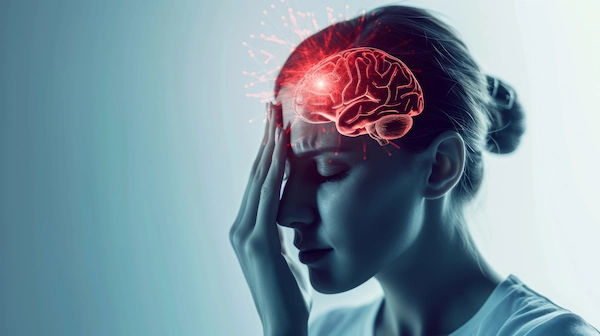

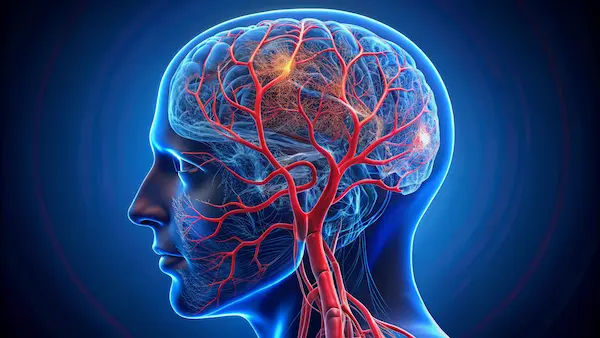
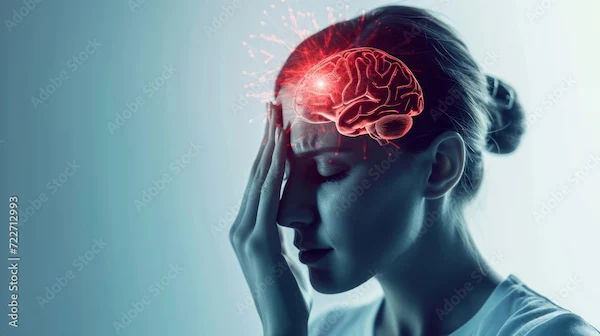
.webp)